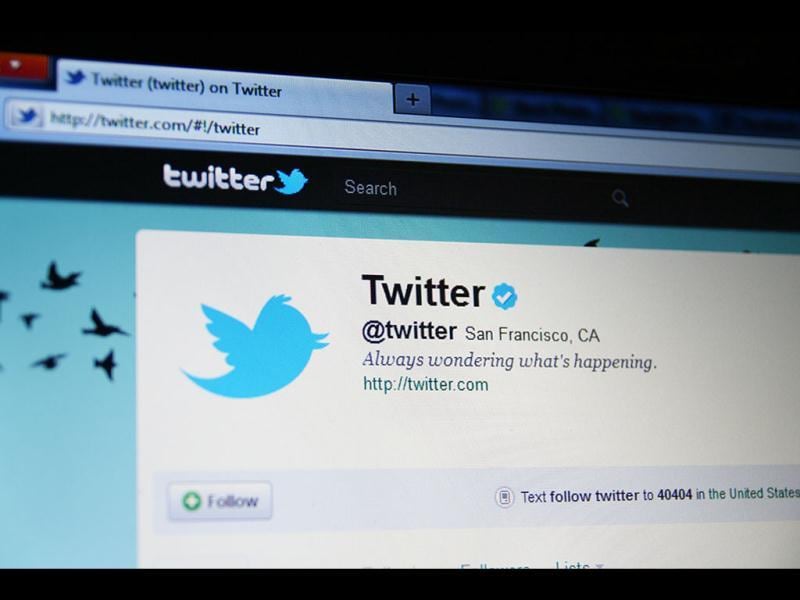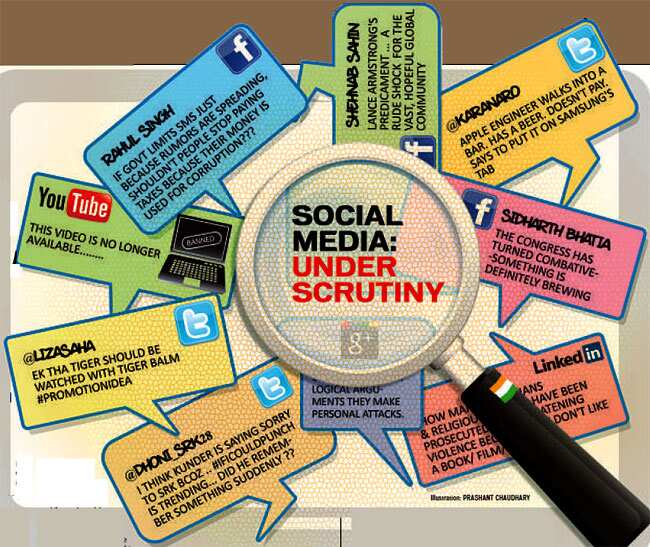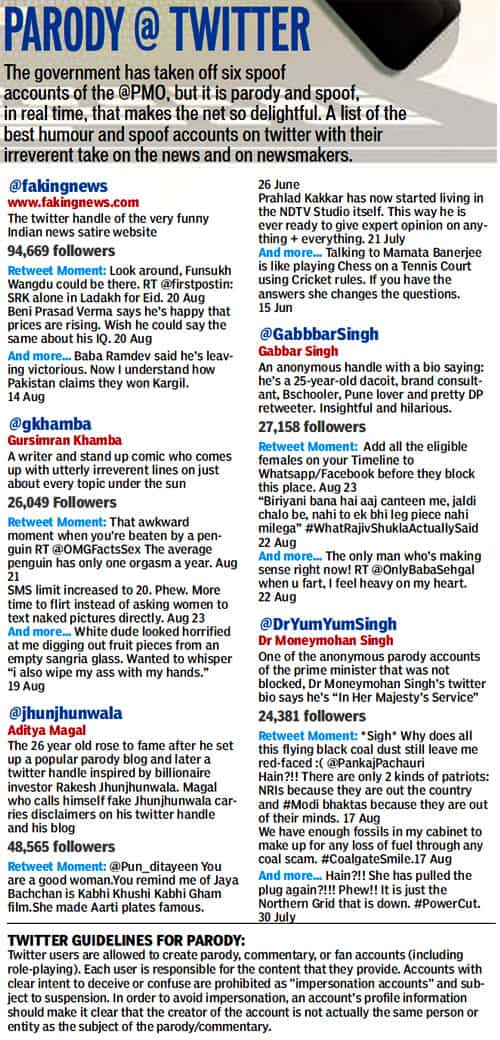Speech and the state
Talk of online censorship in the aftermath of the Assam riots has led to a fresh wave of debate on where freedom of speech ends and national security begins. Shishir Gupta reports. Parody @ Twitter

Call it macabre coincidence or a quirk of fate, the first major communal conflagration between Rohingya Muslims and Rakhine Buddhists took place in Arakan state of Myanmar last June 12, the day when thousands of miles away Home Secretary RK Singh and Director, Intelligence Bureau (IB), Nehchal Sandhu held a meeting with social networking giants in Washington to discuss the need to regulate communal content on the internet.
The two top Indian officials showed representatives of global companies like Google, Yahoo, Facebook and Twitter printouts of communal literature accessible through the internet in India. Singh and Sandhu sought cooperation in blocking hate mails, communal content and even exposing culprits. The American companies were forced to give assurances to the bureaucrats as they were told that their sites would only be allowed to function if servers were set up in India.


Mechanics of monitoring
While a Cyber Security Coordinator is still to be appointed, the National Technical Research Organisation has the onerous task of filtering content 24X7, through internet service providers, looking to block communal content and objectionable material.
Once a website is found to be suspect, the NTRO or IB inform the Central Emergency Response Team under the information technology department, who in turn inform the site about the objectionable content so that it could be blocked or deleted. The Department of Telecommunication (DoT) empowered by clause 69 (1) of the Information Technology Act, 2000 also has the power to block a site to prevent "incitement for commission of a cognisable offence." It is under this clause that more than 310 sites and 16 Twitter handles were blocked by the DoT largely at the recommendations of IB and NTRO.
Beyond the brief
So what started as a exercise to control online communal content, became an issue of freedom of speech and politics. "Twitter initially looked the other way when we asked them to block 28 URL numbers. The 16 twitter accounts that have been notified as blocked may have been used by third parties to post communal material with or without the knowledge of the handle owner. In case of PMO accounts, they were… impersonating the PM. Does India want a situation when some rabid statement on Pakistan is given in the name of PMO…?," said a top DoT official.
Twitter said it was "now actively reviewing" the request from Indian authorities and would seek more information from the ministry of communications and information technology "to locate the unlawful content and the specific unlawful tweet.
But the matter is not so simple. Of the 310 sites and 28 twitter URLs, the IB has recommended some 200 sites and no twitter accounts to be blocked. Most of the fake PMO accounts indicated their being a parody account. The communal sites — which originate more in Saudi Arabia and Gulf Countries than Pakistan — have been recommended for blocking after sifting through suspect mobile numbers to track SMSes and MMSes.
After painstakingly sifting through suspect numbers, millions of messages and mails, the IB cyber wing was able to pin-point the role of social sites and SMSes in Assam, Mumbai and the exodus. The security agency has been able to establish how the SMS which initially started on atrocities of Rohingya Muslims with pan-Islamic content from Chittagong in Bangladesh, was changed to include Assam violence in Coimbatore and then retribution against NE residents was added in Hubli in Karnataka. While Indian netizens have called the blocking of social media sites against freedom of speech, government action initially was only focused on communal violence.
"Not a single site or facebook page or youtube URL that has been recommended by us to DoT for blocking has any political motive. It has all to do with Assam violence and its aftermath," said a senior Home Ministry official.
So then why are global netizens and twitterati up in arms against net censorship in India? The answer lies with overzealous bureaucrats who mixed up an internal security exercise with backlog work without realising the political connotations. While DoT officials are adamant that they only did what the Home Ministry wanted, the fact is that the PMO had been wanting the six fake accounts to be removed for the past six months and the security agencies had asked some 40 URLs and sites to be blocked some months ago. The complication arose as the DoT apparently used the August communal violence to lump all the recommendations and went on a blocking spree. It is another matter that only on Friday night, Twitter conveyed its readiness to block the recommended numbers on the government threat that otherwise it would be forced to block the entire Twitter service.
Of late, there is another issue. What does one do when the State misuses a law to impose unreasonable restrictions? There was a national unroar after the Mamata Banerjee Government arrested Jadavpur University professor Ambikesh Mahapatra for forwarding a mail lampooning her in April. He was charged with outraging the modesty of a woman and defamation, among other offences. Earlier this month, a farmer Shiladitya Chowdhury, was arrested after he asked her an uncomfortable question. Says Navnita Behera, Professor of Political Science, University of Delhi: "The State can't misuse laws to impose unreasonable restrictions. It has to act within limits of law and norms of civilised behavior in a democratic society."
More Challenges ahead
Meanwhile, among the internal security establishment, questions are being raised about cyber capabilities now, as there is suspicion that the SMSes that sparked off the NE exodus could be part of a dry run for a larger conflagration to come. While the National Security Council Secretariat is finalising the name of the country's first cyber security coordinator, they know that the set-up is under-powered and lacks critical technology. Security agencies on their part are proposing stronger unobtrusive monitoring of the gateways as ham-handed blocking of sites was not the answer. They are also recommending that it be made mandatory for telecom companies to keep SMSes and MMSes stored for a year so that they could be accessed for cyber forensic investigation. But even the sleuths know that cyber security is only part of the problem and the solution lies in putting a lid on religious radicalisation in the country. For them, India's nightmare may have just begun.
With inputs from Satya Prakash, Vivek Sinha and Upasana Mukherjee




Catch all the Latest Tech News, Mobile News, Laptop News, Gaming news, Wearables News , How To News, also keep up with us on Whatsapp channel,Twitter, Facebook, Google News, and Instagram. For our latest videos, subscribe to our YouTube channel.


























